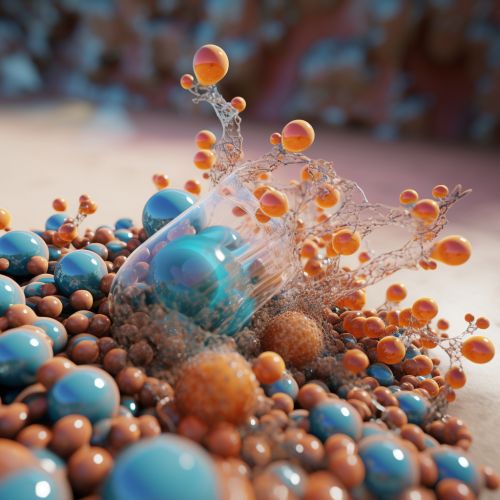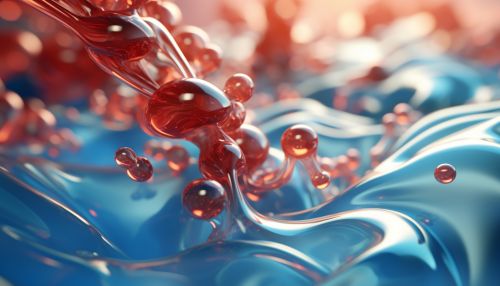Enzyme Catalysis
Introduction
Enzyme catalysis is a process in which enzymes accelerate, or catalyze, chemical reactions. The molecules at the beginning of the process are called substrates, and the enzyme converts them into different molecules, known as products. Almost all metabolic processes in the cell require enzyme catalytic activity.


Mechanism of Enzyme Catalysis
Enzyme catalysis involves the reduction of the activation energy of a chemical reaction by the formation of an enzyme-substrate complex. This complex is formed by the binding of the substrate to the active site of the enzyme, a region that has a specific shape and functional groups that can interact with the substrate.
Substrate Binding
The first step in enzyme catalysis is the binding of the substrate to the enzyme. This occurs at the enzyme's active site, a region with a specific three-dimensional shape and functional groups that can interact with the substrate. The binding of the substrate to the enzyme causes changes in the distribution of electrons in the chemical bonds of the substrate, making it more reactive.
Transition State Formation
The next step in enzyme catalysis is the formation of the transition state. This is a high-energy state that occurs when the old bonds in the substrate are breaking and new bonds are forming. The enzyme stabilizes the transition state, reducing the energy required to reach this state and thus accelerating the reaction.
Product Formation and Release
The final step in enzyme catalysis is the formation and release of the product. After the transition state, the substrate is converted into the product. The product has a different shape than the substrate, so it no longer fits in the active site and is released. The enzyme is then free to bind another substrate and repeat the process.
Factors Affecting Enzyme Catalysis
Several factors can affect the rate of enzyme catalysis, including temperature, pH, enzyme concentration, substrate concentration, and the presence of inhibitors or activators.
Temperature
Temperature affects the rate of enzyme catalysis by influencing the kinetic energy of the molecules. As the temperature increases, the molecules move faster and collide more often, increasing the rate of reaction. However, if the temperature is too high, the enzyme can denature, or lose its shape, and become inactive.
pH
The pH of the environment can affect the rate of enzyme catalysis by influencing the ionization of the enzyme and substrate. Most enzymes have an optimal pH at which they function best. Deviations from this optimal pH can lead to decreased enzyme activity.
Enzyme Concentration
The concentration of the enzyme can affect the rate of enzyme catalysis. As the enzyme concentration increases, the rate of reaction increases, as there are more enzyme molecules available to bind substrate. However, once all the substrate is bound, increasing the enzyme concentration further will not increase the rate of reaction.
Substrate Concentration
The concentration of the substrate can also affect the rate of enzyme catalysis. As the substrate concentration increases, the rate of reaction increases, as there are more substrate molecules available to bind to the enzyme. However, once all the enzyme's active sites are occupied, increasing the substrate concentration further will not increase the rate of reaction.
Inhibitors and Activators
Inhibitors are molecules that decrease the activity of an enzyme, while activators are molecules that increase the activity of an enzyme. Inhibitors can act competitively, by binding to the active site of the enzyme and preventing the substrate from binding, or noncompetitively, by binding to a different site on the enzyme and changing its shape. Activators typically bind to a different site on the enzyme and change its shape in a way that enhances its activity.
Applications of Enzyme Catalysis
Enzyme catalysis has many applications in various fields, including biochemistry, medicine, and industrial processes.
Biochemistry
In biochemistry, enzymes are essential for the metabolic processes that occur in cells. They catalyze the chemical reactions that convert nutrients into energy and the building blocks of proteins, nucleic acids, and other biomolecules.
Medicine
In medicine, enzymes are used in diagnostic tests and as targets for drugs. For example, the activity of certain enzymes can be measured in the blood to diagnose diseases, and drugs can be designed to inhibit the activity of specific enzymes to treat diseases.
Industrial Processes
In industrial processes, enzymes are used to catalyze reactions that produce chemicals, pharmaceuticals, biofuels, and other products. They are also used in the food and beverage industry to produce beer, wine, cheese, and other products.
